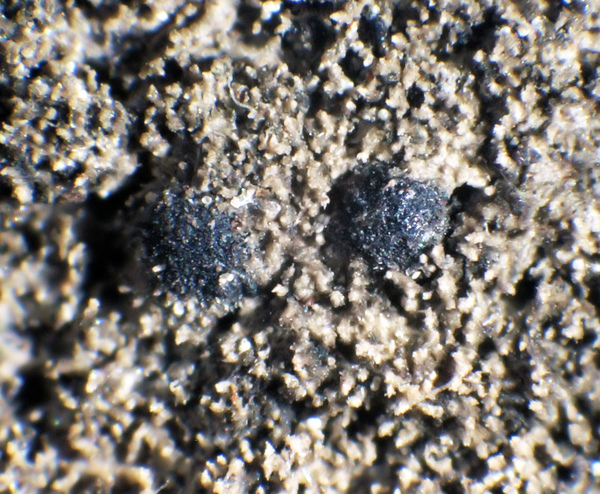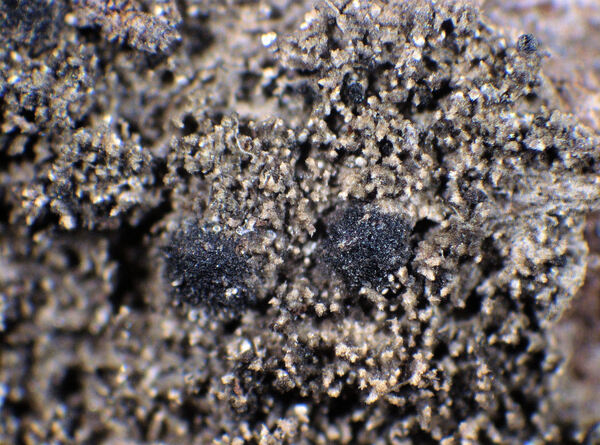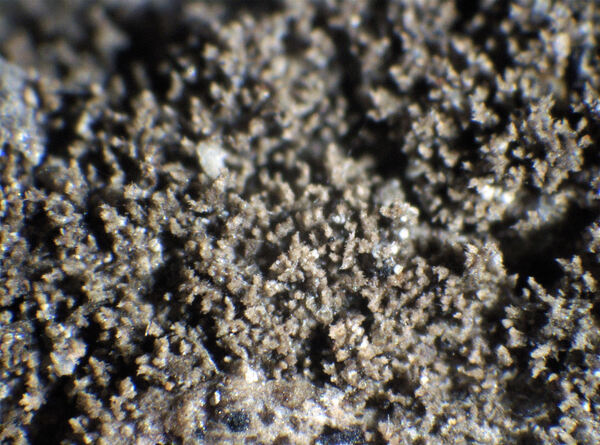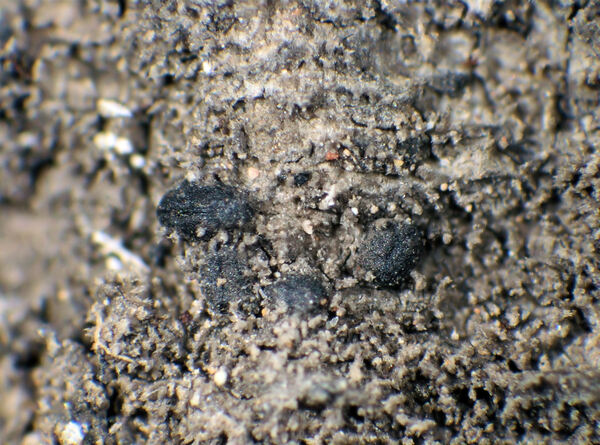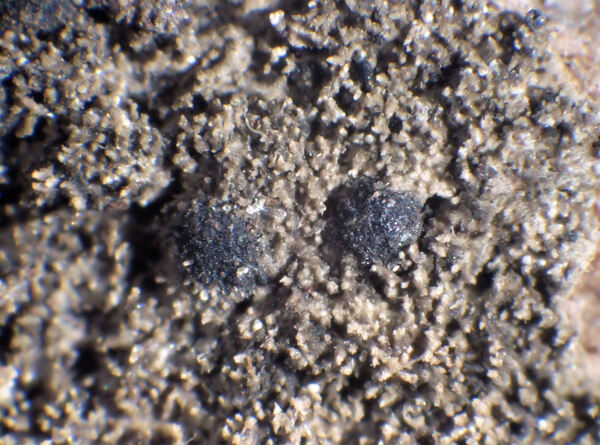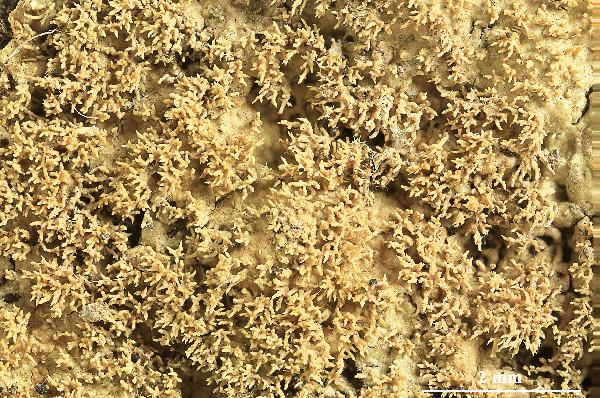Porina coralloidea P. James
Lichenologist, 3: 142, 1971.
Synonyms: Porina stoechadiana F. Rose & Cl. Roux; Zamenhofia coralloidea (P. James) Clauzade & Cl. Roux; Zamenhofia stoechadiana (F. Rose & Cl. Roux) Clauzade & Cl. Roux
Distribution: C - Tosc, Laz (Hafellner & Kalb 1995, Stofer 2006, Tretiach 2014). S - Camp (Nimis & Tretiach 2004), Cal (Puntillo 1996, Sérusiaux 1998), Si (Nimis & al. 1994).
Description: Thallus crustose, episubstratic, grey with a pinkish hue when fresh, isidiate. Isidia usually crowded, 0.1-0.2 x 0.04-0.07 mm, simple or rarely branched, elongate-ovoid to cylindrical, the apex often paler, formed of a tuft of hyaline hyphae resembling thin hairs. Perithecia black, 0.3-0.4 mm across, scattered, semi-immersed in the thallus or sometimes not obviously associated with the thallus. Involucrellum dark brown, K+ greenish blue to blackish, S+ purple-red, N+ orange to reddish brown; exciple yellow to brownish yellow (Porina-yellow pigment), K+ golden brown; hamathecium of periphyses and simple or rarely branched, c. 1 μm thick paraphyses, the hymenial gel I-, K/I-. Asci 8-spored, clavate-cylindrical, thin-walled, functionally unitunicate, I-, K/I-, the apex truncate without a refractive chitinose ring. Ascospores (6-)9-11(-12)-septate, hyaline, elongate-ellipsoid, (35-)40-57(-65) x (5-)8-13(-15) μm. Photobiont trentepohlioid. Spot tests: thallus K-, C-, KC-, P-, UV-. Chemistry: thallus without lichen substances.Note: a humid subtropical to Mediterranean-Atlantic lichen found on old, moderately sheltered trunks (e.g. of Quercus ilex) in humid areas, with a clearly Tyrrhenian range in Italy. It is included in the Italian red list of epiphytic lichens as “Vulnerable” (Nascimbene & al. 2013c).
Growth form: Crustose
Substrata: bark
Photobiont: Trentepohlia
Reproductive strategy: mainly asexual, by isidia, or isidia-like structures (e.g. schizidia)
Most common in areas with a humid-warm climate (e.g. most of Tyrrenian Italy)
Commonnes-rarity: (info)
Alpine belt: absent
Subalpine belt: absent
Oromediterranean belt: absent
Montane belt: absent
Submediterranean belt: absent
Padanian area: absent
Humid submediterranean belt: absent
Humid mediterranean belt: very rare
Dry mediterranean belt: absent

Predictive model
Herbarium samples
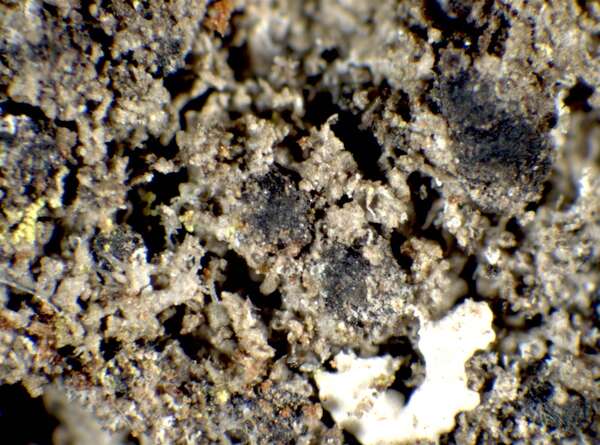

P.L. Nimis; Owner: Department of Life Sciences, University of Trieste
Herbarium: TSB (15325)
2001/12/15
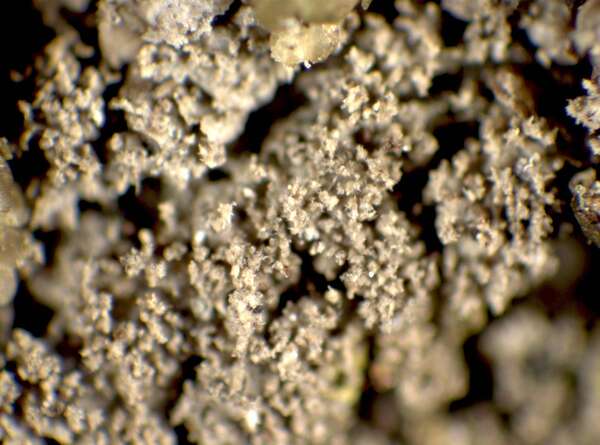

P.L. Nimis; Owner: Department of Life Sciences, University of Trieste
Herbarium: TSB (15336)
2001/12/15
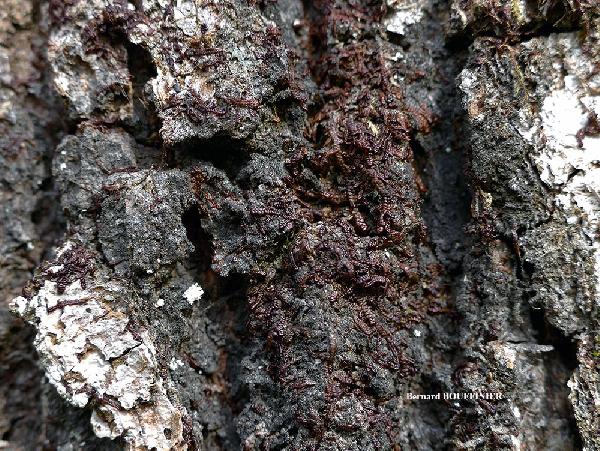
Bernard Bouffinier - Source: http://www.lichensmaritimes.org/index.php?task=fiche&lichen=260&lang=en
France, Forêt du Cranou

Bernard Bouffinier - Source: http://www.lichensmaritimes.org/index.php?task=fiche&lichen=260&lang=en
France, Forêt du Cranou

Bernard Bouffinier - Source: http://www.lichensmaritimes.org/index.php?task=fiche&lichen=260&lang=en
France, Forêt du Cranou
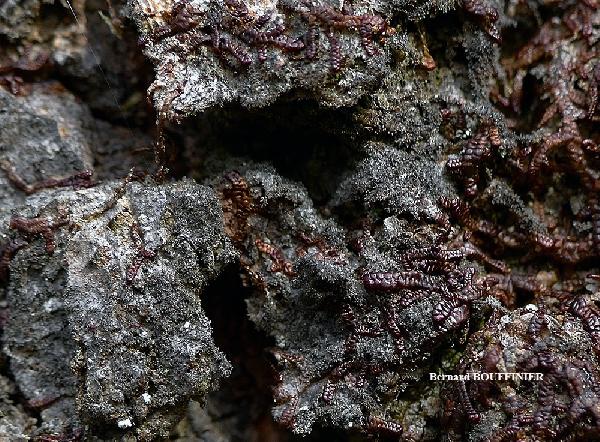
Bernard Bouffinier - Source: http://www.lichensmaritimes.org/index.php?task=fiche&lichen=260&lang=en
France, Forêt du Cranou
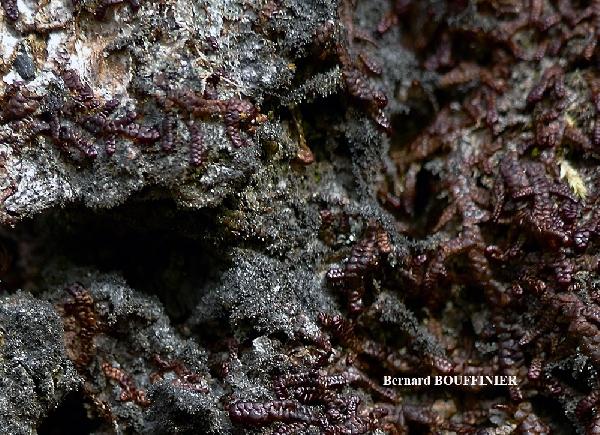
Bernard Bouffinier - Source: http://www.lichensmaritimes.org/index.php?task=fiche&lichen=260&lang=en
France, Forêt du Cranou
Growth form: Crustose
Substrata: bark
Photobiont: Trentepohlia
Reproductive strategy: mainly asexual, by isidia, or isidia-like structures (e.g. schizidia)
Most common in areas with a humid-warm climate (e.g. most of Tyrrenian Italy)
Commonnes-rarity: (info)
Alpine belt: absent
Subalpine belt: absent
Oromediterranean belt: absent
Montane belt: absent
Submediterranean belt: absent
Padanian area: absent
Humid submediterranean belt: absent
Humid mediterranean belt: very rare
Dry mediterranean belt: absent

Predictive model
| Herbarium samples |


P.L. Nimis; Owner: Department of Life Sciences, University of Trieste
Herbarium: TSB (15325)
2001/12/15


P.L. Nimis; Owner: Department of Life Sciences, University of Trieste
Herbarium: TSB (15336)
2001/12/15

Bernard Bouffinier - Source: http://www.lichensmaritimes.org/index.php?task=fiche&lichen=260&lang=en
France, Forêt du Cranou

Bernard Bouffinier - Source: http://www.lichensmaritimes.org/index.php?task=fiche&lichen=260&lang=en
France, Forêt du Cranou

Bernard Bouffinier - Source: http://www.lichensmaritimes.org/index.php?task=fiche&lichen=260&lang=en
France, Forêt du Cranou

Bernard Bouffinier - Source: http://www.lichensmaritimes.org/index.php?task=fiche&lichen=260&lang=en
France, Forêt du Cranou

 INDEX FUNGORUM
INDEX FUNGORUM
 GBIF
GBIF
